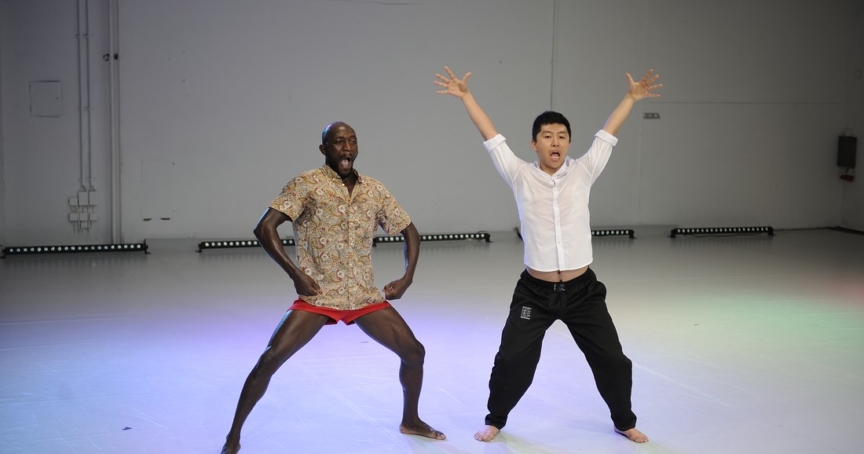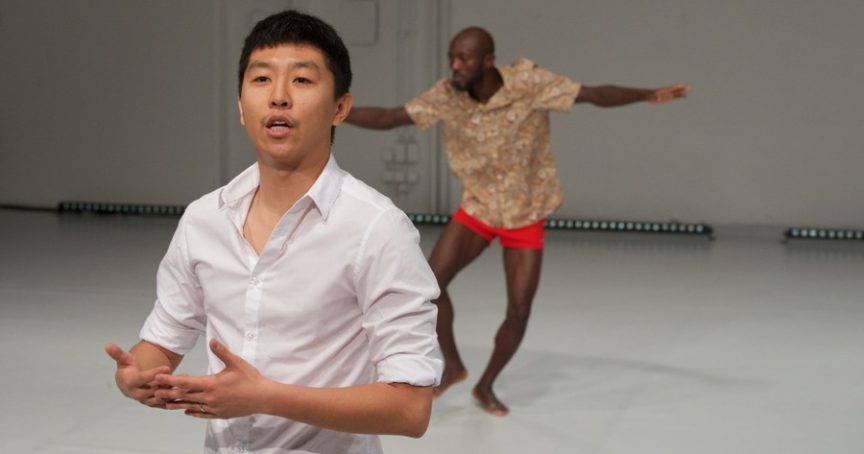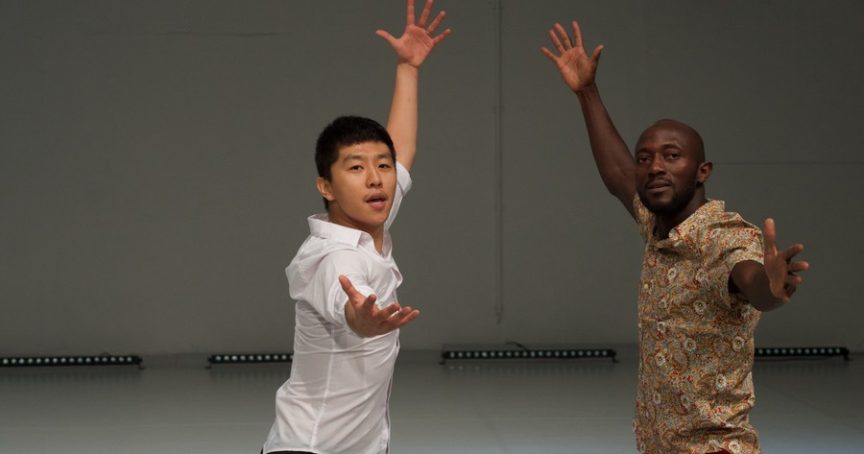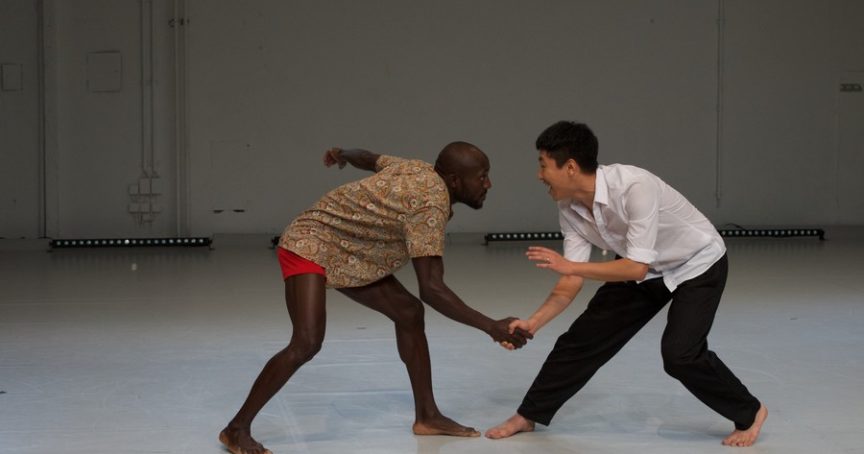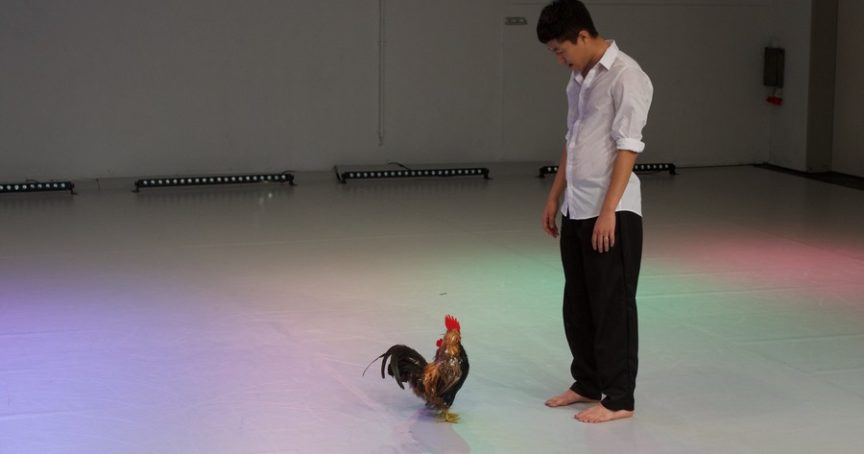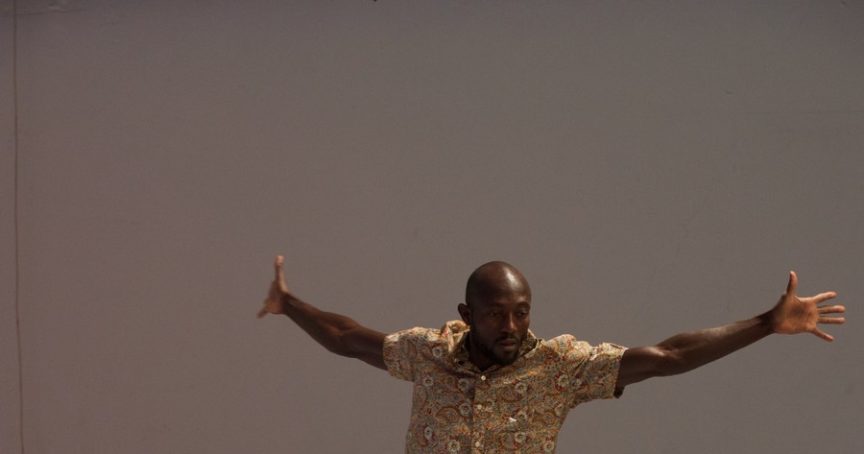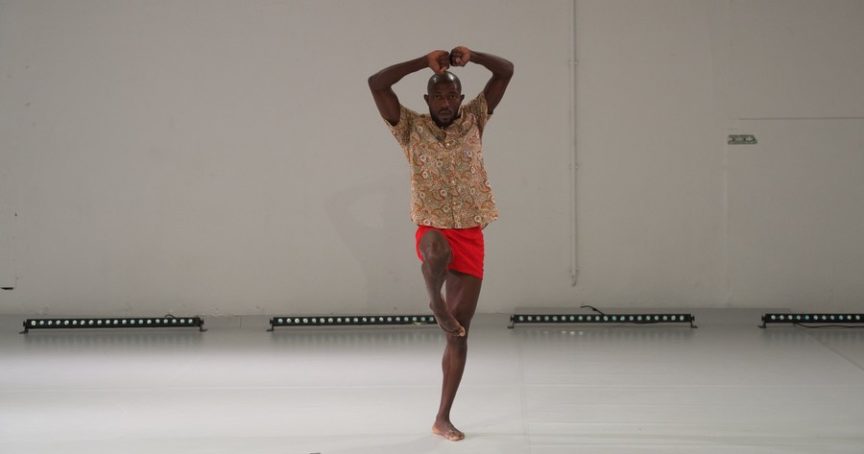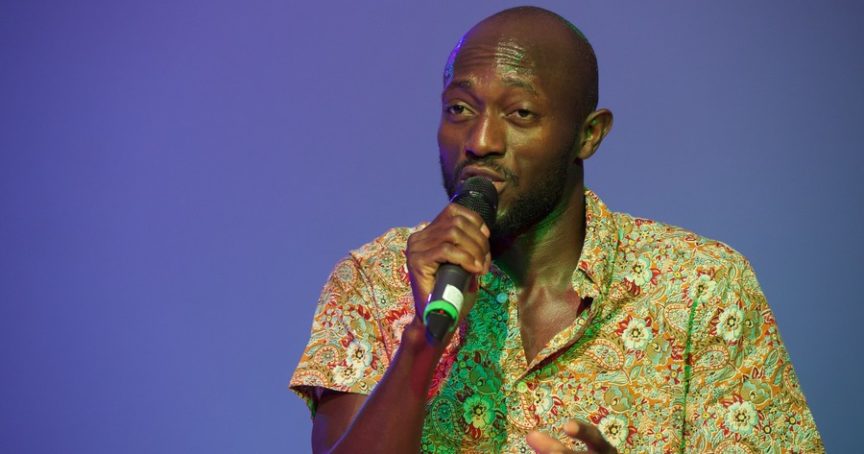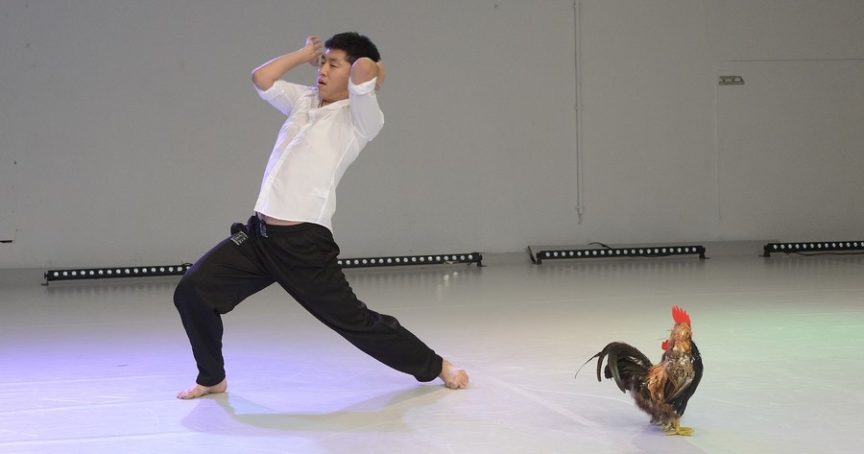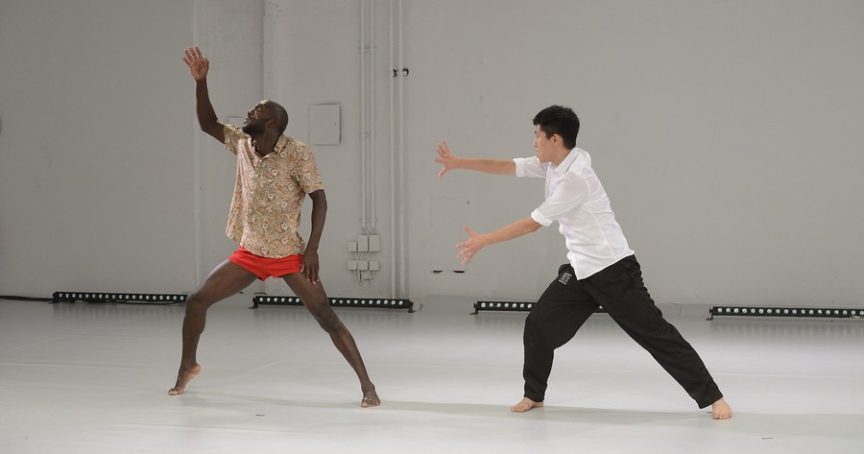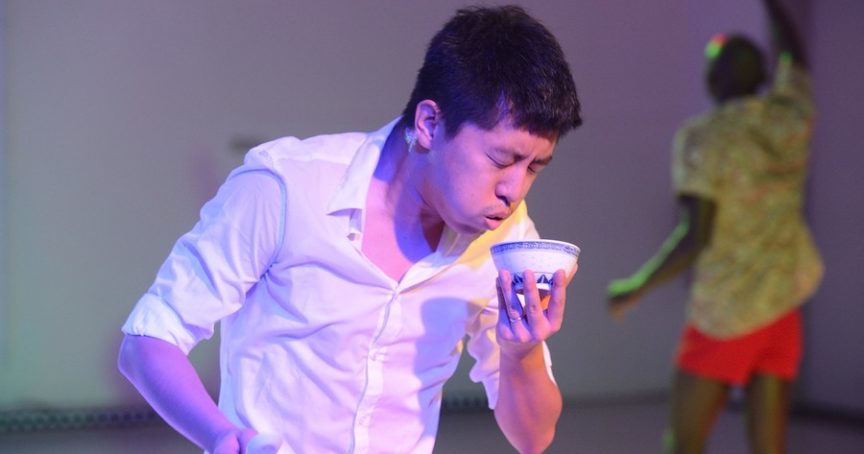The Lion and the Dragon
2016, Duett
about the piece
Beyond a euro-centric fixation on the momentary financial and monetary crisis in Europe and the US, economic cooperation between China and Africa is rapidly advancing. One example of this is the Forum on China-Africa Cooperation, or simply FOCAC. The last of these meetings took place in South Africa in 2015 when the Chinese president Xi Jinping announced that he would invest or issue loans up to 30 billion dollars. This led to China being criticized as a new colonial power. “The Lion & The Dragon” is a meeting between the dancers Naishi Wang and Ahmed Soura – a clash of two different mentalities that aims to challenge both. Both dancers studied classical Chinese, respectively African folk dance at the beginning of their careers and have been integrated this knowledge into their contemporary dance practices. An important difference between the two traditional dance cultures lies in their respective approaches to animism. While an African dancer always tries to empathize with the soul of the animal when depicting a lion or a buffalo, Chinese dance stylizes the image and the movements of the animal, for example the flight of an eagle or dragon. Based on these differences, the two performers use dance to discuss the problem of reconciling China’s economic interests with the growing self-confidence of an emerging African continent.
videos
credits
Concept, Choreography: Christoph Winkler | Dance, Choreography: Ahmed Soura & Naishi Wang | Set and Costumes: Lena Mody, Valentina Primavera | Head of Tech: Martin Pilz | Camera: Walter BickmannTanzforum Berlin | Production: ehrliche arbeit – freelance office for culture.
A Christoph Winkler and ehrliche arbeit production, co-produced by SOPHIENSÆLE and monsun.theater Hamburg. Made possible by the Governing Mayor of Berlin - Senate Chancellery - Cultural Affairs and the National Performance Netz (NPN) Coproduction Fund for Dance, which is funded by the Federal Government Commissioner for Culture and the Media on the basis of a decision by the German Bundestag. Media partner: taz.die tageszeitung.
reviews
In "Study 5: The Lion and The Dragon", Winkler veteran dancer Ahmed Soura, who already demonstrated his style of African and European dance in “Hauptrolle” and "Dance Is Not Enough", battles with Naishi Wang, who is trained in both Chinese and contemporary Western technique and has likewise worked with Winkler on several occasions. The duet is based on the concept of economic cooperation between Africa and China. What does it mean that Africa is once again indiscriminately adressed as a whole continent as it faces an invest-making or rather: neo-colonialist country? Whatever the case may be, Wang and Soura resemble school teachers explaining that China is building roads, hospitals and airports, which it cleverly only rents out to the respective national governments instead of selling or transferring them. In return it receives natural resources such as oil, cotton or coltan. China is moreover recruiting African workers – which inspires Soura and Wang to engage in a callous contest of clichés: Chinese do nothing but work and do not enjoy their lives, says Soura; Wang counters with: Africans are too loud and have no family values. And while the two dancers sing and beatbox to platitudes, they subject "African" and "Asian" movement vocabulary to a comparative study: Soura's rhythmically complex technique of quick strides and isolated body sequences, with a string emphasis on the shoulders, while the limbs and flanks arch forwards around the body; Wang's scurrying steps and softly curved, flowing arm movements with extremely articulated hands, which visually signify "Asian". Self-exoticization or structural revelations? Elena Philipp, tanzraumberlin

